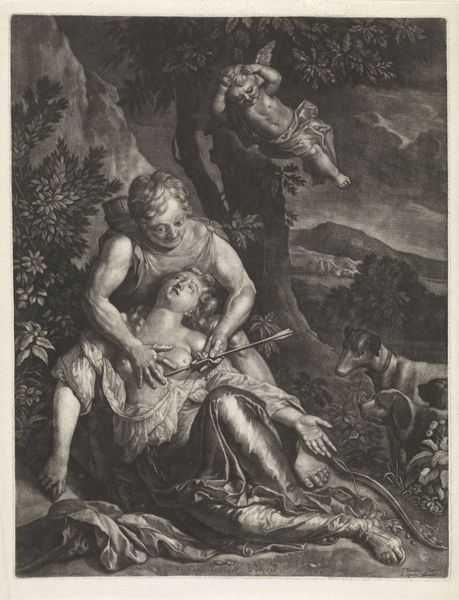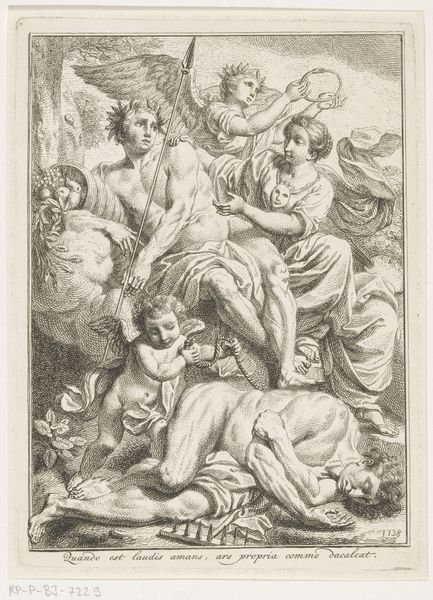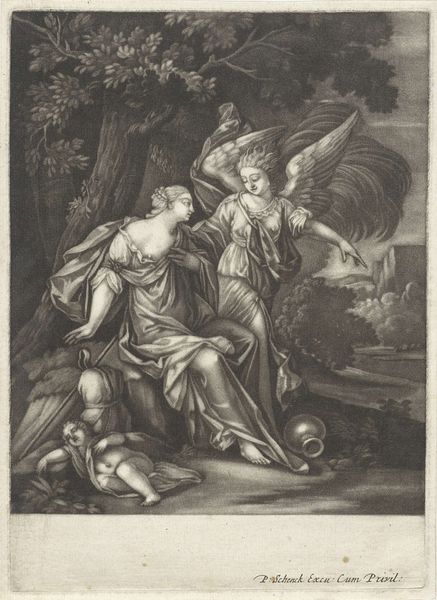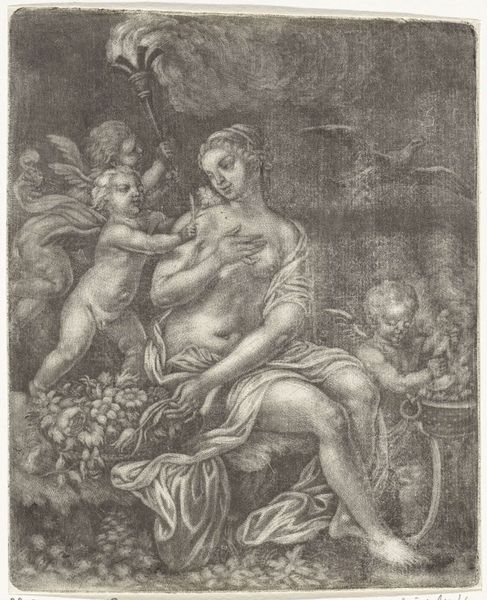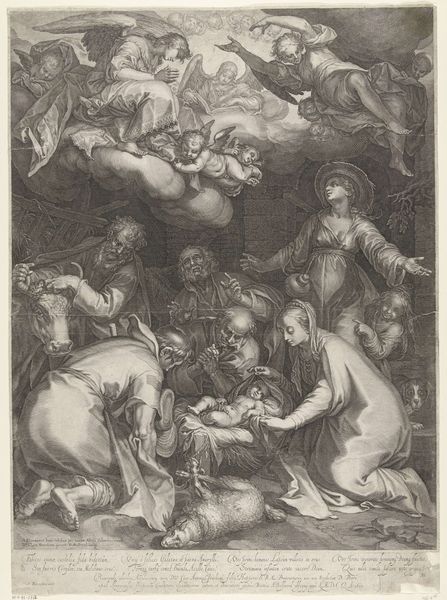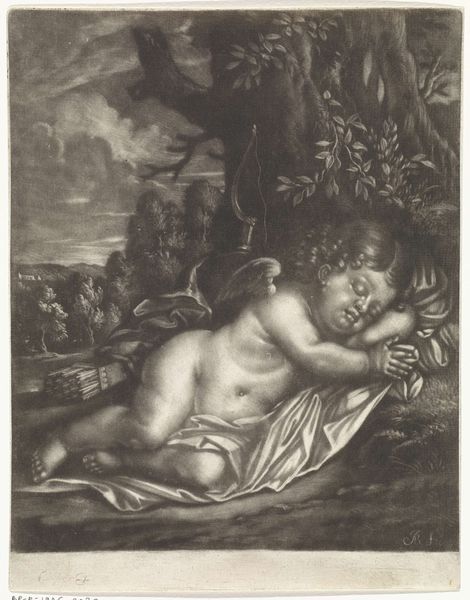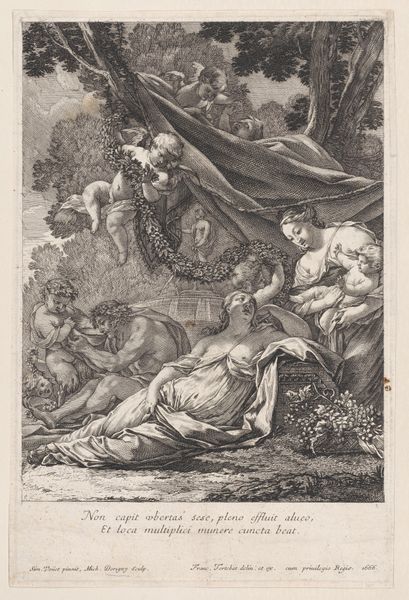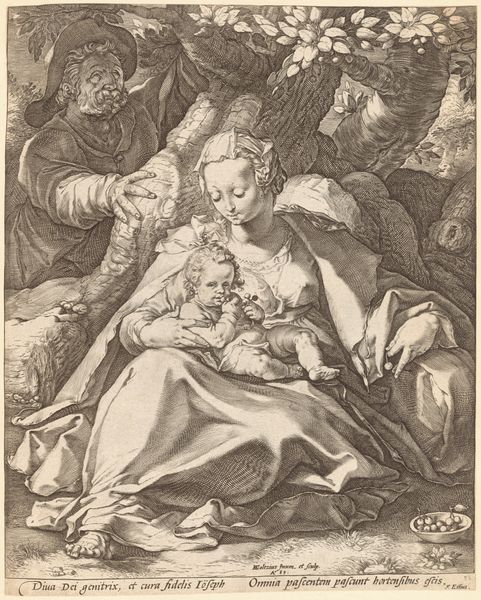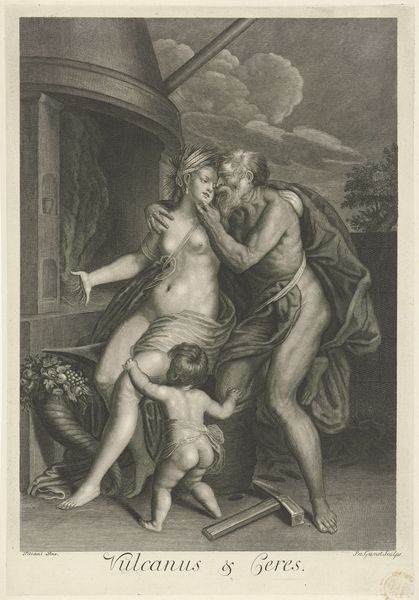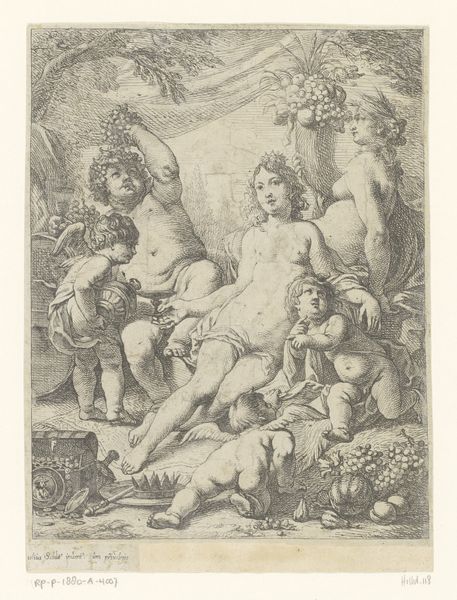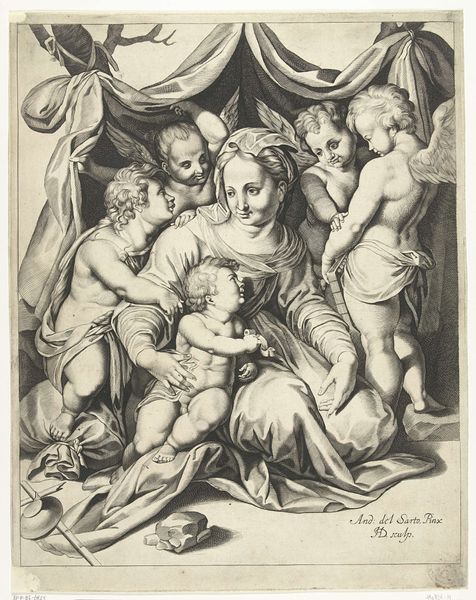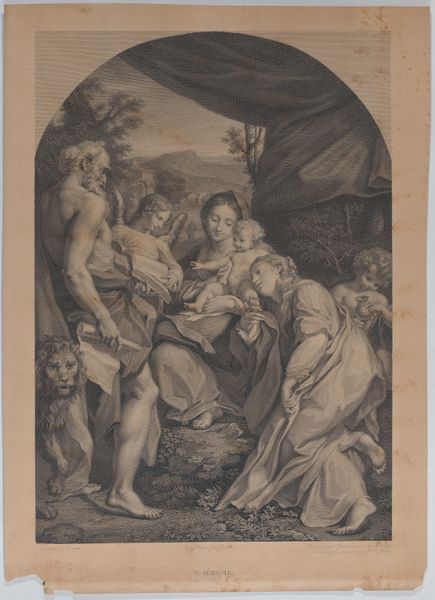
engraving
#
allegory
#
baroque
#
figuration
#
history-painting
#
nude
#
engraving
Dimensions: height 251 mm, width 180 mm
Copyright: Rijks Museum: Open Domain
Editor: This engraving, "Armida en de slapende Rinaldo" by Jacob Gole, dates between 1670 and 1724. The composition feels very theatrical, with all these figures arranged so precisely. How do you interpret the overall structure of the piece? Curator: Notice how the artist has orchestrated a delicate balance between light and shadow. The chiaroscuro technique brings a heightened drama to the interplay of the figures. Further, observe the serpentine line—the "line of beauty," as Hogarth would later term it—evident in Armida’s pose and echoed in the drapery and the flanking figures, imparting a sense of dynamism despite the subjects' seeming repose. Editor: The lines do guide your eye around the image. So, focusing on Armida herself, is she a dominant presence or does Rinaldo share the stage equally? Curator: Intriguing question! Structurally, Armida anchors the composition. Her form is more luminous, positioned at the apex of a triangular arrangement completed by the surrounding figures. Yet, paradoxically, Rinaldo occupies the spatial foreground. What does this tension between visual prominence and spatial positioning suggest to you? Editor: Maybe it shows the push and pull between power and vulnerability within the narrative itself? I hadn't thought of it that way at first. Curator: Precisely! The artist uses these formal elements – line, light, and spatial arrangement – to underscore thematic tensions within the depicted scene. Considering these techniques helps reveal the conceptual depth of the work. Editor: Thank you for pointing out these aspects! I learned a lot about analyzing engravings. Curator: Indeed. Art reveals itself through diligent observation and an appreciation for form.
Comments
No comments
Be the first to comment and join the conversation on the ultimate creative platform.

